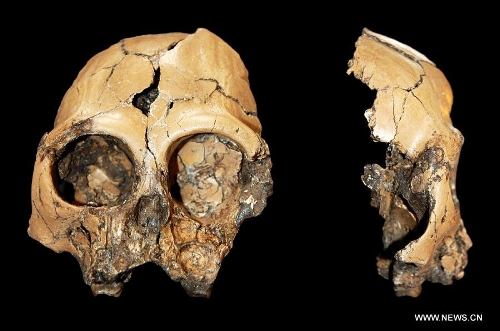Rare 6-Million-Year-Old Skull of Juvenile Ape Discovered
A new cranium of a fossil ape from Shuitangba, a Miocene site in Yunnan province, China has been confirmed by a team of scientists. Dr Denise Su, curator of palaeobotany and paleoecology at The Cleveland Museum of Natural History, co-authored research describing the new skull published online in the Chinese Science Bulletin.
A significant discovery is the new juvenile cranium of the fossil ape Lufengpithecus, since juvenile crania of apes and hominins are extremely rare in fossil records, particularly those of infants and young juveniles.
The latest find cranium is just the second relatively complete cranium of a young juvenile in the entire Miocene (23 to 5 million years ago) record of fossil apes all over the Old World, and both were discovered from the late Miocene of Yunnan Province.

The new cranium is also noteworthy for its age. Shuitangba, the site from which it was recovered, at just over 6 million years, dates to near the end of the Miocene, a time when apes had become extinct in most of Eurasia.
Shuitangba has also produced remains of the fossil monkey, Mesopithecus, which represents the earliest occurrence of monkeys in East Asia.

The preservation of the new cranium is excellent, which is important because all previously discovered adult crania of the species to which it is assigned, Lufengpithecus lufengensis, were badly crushed and distorted during the fossilization process.
In living ape species, cranial anatomy in individuals at the same stage of development as the new fossil cranium already show a close resemblance to those of adults. Therefore, this fossil gives researchers the best look at the cranial anatomy of the species.
The team notes that the new cranium shows little resemblance to those of living orangutans, and in particular, shows none of what are considered to be key diagnostic features of orangutan crania.
Lufengpithecus, therefore, appears to represent a late surviving lineage of Eurasian apes, but with no certain affinities yet clear.
The survival of this lineage is not entirely surprising since southern China was less affected by the climatic deterioration during the later Miocene that resulted in the extinction of many ape species throughout the rest of Eurasia.
The researchers are hopeful that renewed excavations will produce the remains of adult individuals, which will allow them to better assess both the relationships among members of this lineage as well as the relationships of this lineage to other fossil and living apes.
“In addition to the ape, we have recovered hundreds of specimens of other animals and plants,” said Su.
“We are looking forward to going back to Shuitangba next year to continue fieldwork and, hopefully, find more specimens of not only the ape but other animals and plants that will tell us more about the environment.
Given what we have recovered so far, Shuitangba has great potential to help us learn more about the environment in the latest part of the Miocene in southern China and the evolution of the plants and animals found there.”
